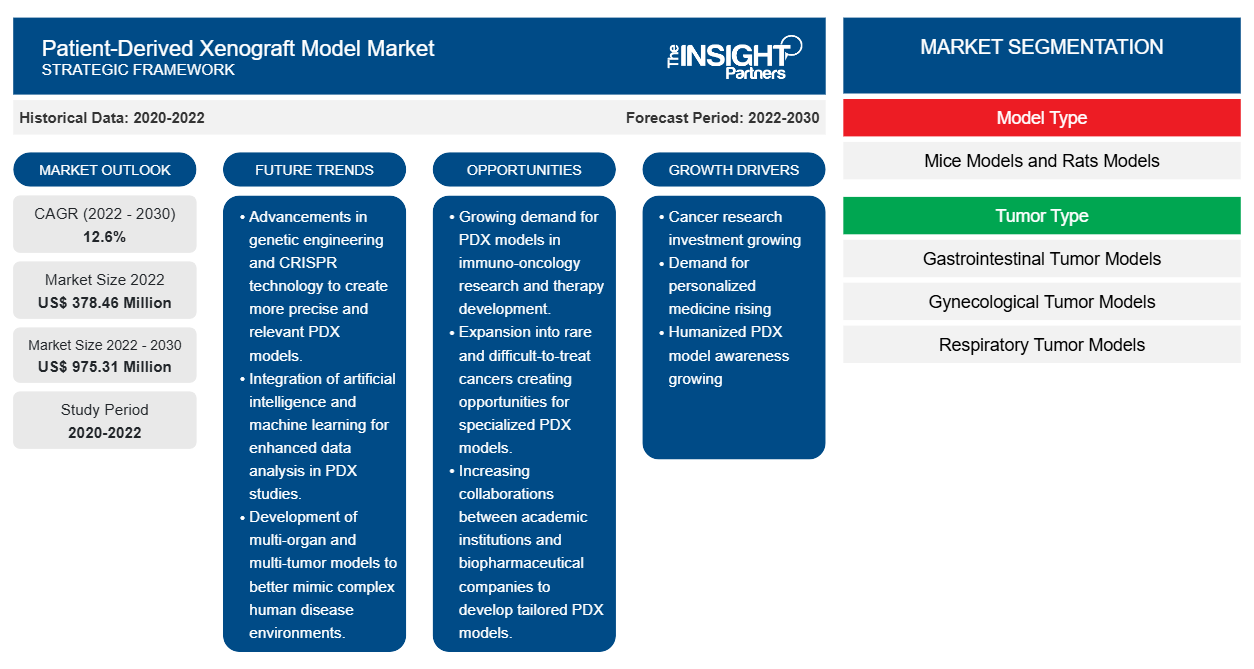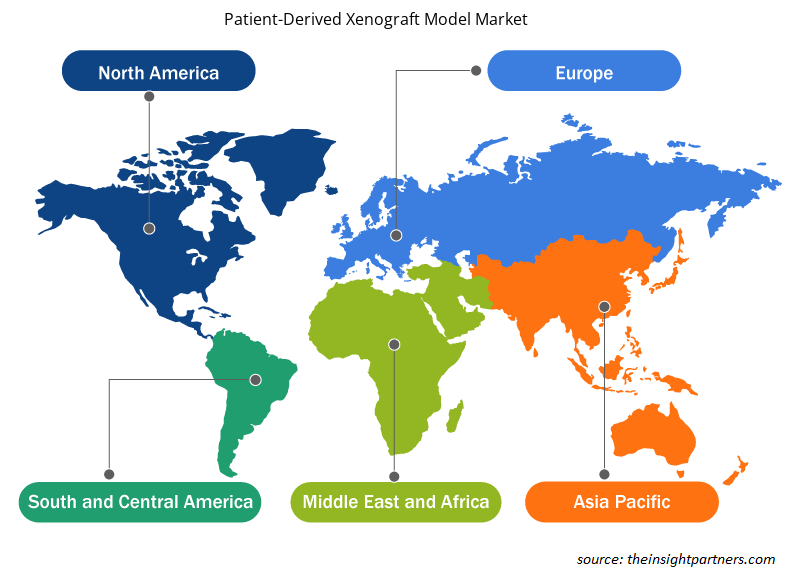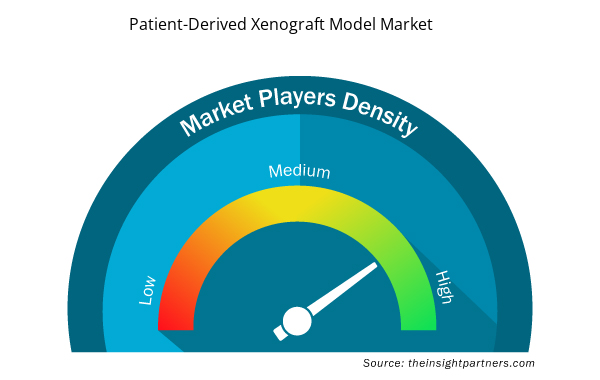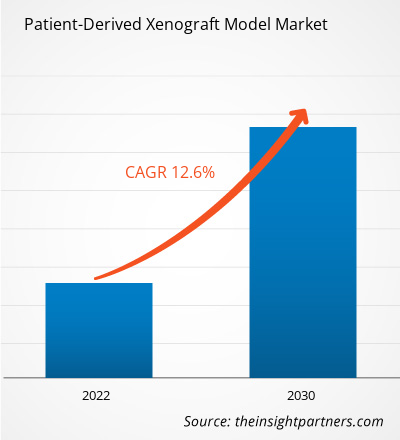[Research Report] The patient-derived xenograft model market size is projected to grow from US$ 378.46 million in 2022 to US$ 975.31 million by 2030; it is estimated to record a CAGR of 12.6% during 2022–2030.
Market Insights and Analyst View:
The patient-derived xenograft (PDX) model refers to laboratory models that are created by implanting patient tumor tissues directly into immunodeficient mice. These models are used in preclinical research to study the behavior of tumors and evaluate the efficacy of potential therapies. The market is expected to exhibit a promising performance over the next decade. Driven by elevating investments in cancer research and rising demand for personalized medicine, the adoption of PDX models is likely to surge significantly. As drug developers strive to improve their clinical success rates, PDX models are becoming a valuable tool due to their ability to mimic human tumor behavior and suitability for therapy response prediction studies, which favor the growth of the patient-derived xenograft model market
Growth Drivers:
Mice that are immunocompromised are now reconstituted with bone marrow or peripheral blood cells and patients’ tumor implants to create humanized xenograft models. Humanized models can be utilized to study the role of xenogeneic immune cells in overall anti-cancer immunity. Humanized models also help in the development of immunotherapy drugs. However, in humanized mice models, there is a risk of graft vs. host disease, which may hamper the outcomes of stroma-tumor interaction evaluation studies. These interactions are essential for tumor growth and progression in patients. Humanized models engrafted with PDX offer a promising approach to oncology research, providing an improved understanding of human tumors and accelerating the development of personalized treatments. PDX models offer numerous advantages, including the depiction of the patient’s tumor microenvironment and its diversity, the detection of therapeutic targets, the determination of the potential for developing personalized therapies, and the interaction with a complete human immune system. Humanized patient-derived xenograft models help overcome the humanized mice models' drawbacks and are gaining demand in the market. For example, Champions Oncology has developed more than 1,500 diverse tumor models from various patients in the primary or metastatic phase. Thus, the growing awareness regarding the benefits of humanized PDX models boosts the patient-derived xenograft model market growth during the forecast period.
Moreover, the patient-derived xenograft model market trends include the development of next-generation PDX technologies and ongoing research studies for drug development.
Customize This Report To Suit Your Requirement
You will get customization on any report - free of charge - including parts of this report, or country-level analysis, Excel Data pack, as well as avail great offers and discounts for start-ups & universities
Patient-Derived Xenograft Model Market: Strategic Insights

- Get Top Key Market Trends of this report.This FREE sample will include data analysis, ranging from market trends to estimates and forecasts.
Customize This Report To Suit Your Requirement
You will get customization on any report - free of charge - including parts of this report, or country-level analysis, Excel Data pack, as well as avail great offers and discounts for start-ups & universities
Patient-Derived Xenograft Model Market: Strategic Insights

- Get Top Key Market Trends of this report.This FREE sample will include data analysis, ranging from market trends to estimates and forecasts.
Report Segmentation and Scope:
The patient-derived xenograft model market analysis has been carried out by considering the following segments: model type, tumor type, application, end user, and geography. Based on model type, the market is categorized into mice models and rats models. In terms of tumor type, the patient-derived xenograft model market is classified into gastrointestinal tumor models, gynecological tumor models, respiratory tumor models, and other tumor models. The market, by application, is segmented into preclinical drug development, biomarker analysis, translational research, and biobanking. Based on end user, the market is segmented into pharmaceutical and biotechnology companies, academic and government research institutions, and contract research organizations.
The scope of the patient-derived xenograft model market report covers North America (US, Canada, and Mexico), Europe (France, Germany, UK, Spain, Italy, and Rest of Europe), Asia Pacific (China, Japan, India, South Korea, Australia, and Rest of Asia Pacific), the Middle East & Africa (Saudi Arabia, UAE, South Africa, and Rest of Middle East & Africa), and South & Central America (Brazil, Argentina, and Rest of South & Central America).
Segmental Analysis:
The patient-derived xenograft model market, by model type, is bifurcated into mice models and rats models. The mice models segment held a significant market share in 2022. It is anticipated to record a higher CAGR in the market during 2022–2030.
Based on tumor type, the market is segmented into gastrointestinal tumor models, respiratory tumor models, gynecological tumor models, and other tumor models. In 2022, the other tumor model segment held a significant share of the market and is projected to register the fastest CAGR during 2022–2030.
Based on application, the market is categorized into preclinical drug development, biomarker analysis, translational research, and biobanking. The preclinical drug development segment held a significant patient-derived xenograft model market share in 2022. The segment is estimated to register the highest CAGR during 2022–2030.
Based on end user, the market is segmented into pharmaceutical and biotechnology companies, contract research organizations, and academic and government research institutions. The academic and government research institutions segment held a significant patient-derived xenograft model market share in 2022. It is expected to register the highest CAGR during 2022–2030.
Regional Analysis:
Based on geography, the patient-derived xenograft model market report is primarily divided into North America, Europe, Asia Pacific, South & Central America, and the Middle East & Africa. In 2022, North America captured a significant share of the market. In 2022, the US held the largest share of the market in the region. The market growth in North America is attributed to the availability of modern healthcare infrastructure, the strong presence of key market players, the growing number of cancer cases, and rising investments by the government and private sectors. As per the Centers for Disease Control and Prevention, in 2020, ~239,612 new cases of breast cancer were reported among women in the US, while ~42,273 succumbed to death due to this disease. For every 100,000 women, 119 new breast cancer cases were reported in women, of which nearly 19 have died. As per the breast cancer statistics by the Breast Cancer Organization, about 1 in 8 women (i.e., 12%) develops invasive breast cancer in their lifetime. Moreover, as breast cancer is the most prevalent cancer in Canadian women and the second leading reason for cancer deaths, there is a high demand for efficient diagnosis options. According to the Canadian Cancer Society, ~28,600 women were diagnosed with breast cancer in 2022 in the country, accounting for ~25% of the total new cancer cases in women. With growing cancer cases, the need to develop suitable treatment arises, which propels the growth of the patient-derived xenograft model market.
According to an article published in April 2022 by Oncoimmunology, researchers used the diversity outbred (DO) and collaborative cross (CC) mouse models to study the outcomes of the immune checkpoint inhibitors against various tumors. For this study, the researchers purchased the DO mice models from the Jackson Laboratory and CC mice from the Systems Genetics Core Facility at the University of North Carolina. Thus, the growing research and the use of mouse models for anticancer drug discovery propels the patient-derived xenograft model market growth in the region.
Patient-Derived Xenograft Model Patient-Derived Xenograft Model Market Regional Insights
Patient-Derived Xenograft Model Market Regional Insights
The regional trends and factors influencing the Patient-Derived Xenograft Model Market throughout the forecast period have been thoroughly explained by the analysts at Insight Partners. This section also discusses Patient-Derived Xenograft Model Market segments and geography across North America, Europe, Asia Pacific, Middle East and Africa, and South and Central America.

- Get the Regional Specific Data for Patient-Derived Xenograft Model Market
Patient-Derived Xenograft Model Market Report Scope
| Report Attribute | Details |
|---|---|
| Market size in 2022 | US$ 378.46 Million |
| Market Size by 2030 | US$ 975.31 Million |
| Global CAGR (2022 - 2030) | 12.6% |
| Historical Data | 2020-2022 |
| Forecast period | 2022-2030 |
| Segments Covered |
By Model Type
|
| Regions and Countries Covered | North America
|
| Market leaders and key company profiles |
Patient-Derived Xenograft Model Market Players Density: Understanding Its Impact on Business Dynamics
The Patient-Derived Xenograft Model Market market is growing rapidly, driven by increasing end-user demand due to factors such as evolving consumer preferences, technological advancements, and greater awareness of the product's benefits. As demand rises, businesses are expanding their offerings, innovating to meet consumer needs, and capitalizing on emerging trends, which further fuels market growth.
Market players density refers to the distribution of firms or companies operating within a particular market or industry. It indicates how many competitors (market players) are present in a given market space relative to its size or total market value.
Major Companies operating in the Patient-Derived Xenograft Model Market are:
- Champions Oncology Inc.
- Charles River Laboratories Inc.
- Crown Bioscience Inc.
- EPO Berlin-Buch GmbH
- Hera BioLabs
Disclaimer: The companies listed above are not ranked in any particular order.

- Get the Patient-Derived Xenograft Model Market top key players overview
Industry Developments and Future Opportunities:
Initiatives taken by market players operating in the global patient-derived xenograft model market are listed below:
- In July 2022, GemPharmatech entered a strategic licensing arrangement with Charles River Laboratories. The partnership involves the exclusive distribution rights for GemPharmatech's next-generation NOD CRISPR Prkdc Il2r gamma (NCG) mice lines within North America.
- In November 2021, Inotiv Inc. completed the acquisition of Envigo RMS Holding Corp., a globally leading provider of research models and services.
Competitive Landscape and Key Companies:
The patient-derived xenograft model market forecast can help stakeholders plan their growth strategies. Champions Oncology Inc., Charles River Laboratories Inc., Crown Bioscience Inc., EPO Berlin-Buch GmbH, Hera BioLabs, Horizon Discovery Group plc, Oncodesign, Pharmatest Services Ltd, Xentech SAS, and JSR Corporation are among the prominent players in the market. The market players focus on introducing new high-tech products, advancements in existing products, and geographic expansions to meet the growing consumer demand worldwide.
- Historical Analysis (2 Years), Base Year, Forecast (7 Years) with CAGR
- PEST and SWOT Analysis
- Market Size Value / Volume - Global, Regional, Country
- Industry and Competitive Landscape
- Excel Dataset



Report Coverage
Revenue forecast, Company Analysis, Industry landscape, Growth factors, and Trends

Segment Covered
Model Type, Tumor Type, Application, End User, and Geography

Regional Scope
North America, Europe, Asia Pacific, Middle East & Africa, South & Central America

Country Scope
This text is related
to country scope.
Frequently Asked Questions
The factors driving the growth of the patient-derived xenograft model market include the growing awareness of the advantages of humanized PDX models and the rising demand for personalized medicine. However, significant operational costs associated with the PDX model hampers the growth of the patient-derived xenograft model market.
The patient-derived xenograft (PDX) model refers to laboratory models that are created by implanting patient tumor tissues directly into immunodeficient mice. These models are used in preclinical research to study the behavior of tumors and evaluate the efficacy of potential therapies.
The global patient-derived xenograft model market is segmented based on model type, tumor type, application, and end user. The patient-derived xenograft model market, by model type, is categorized into mice models and rats models. The mice models segment held a significant share of the market in 2022 and is expected to register a higher CAGR in the market during 2022–2030.
The patient-derived xenograft model market was valued at US$ 378.46 million in 2022.
The patient-derived xenograft model market is expected to be valued at US$ 975.31 million in 2030.
The patient-derived xenograft model market majorly consists of the players, including Champions Oncology Inc., Charles River Laboratories Inc., Crown Bioscience Inc., EPO Berlin-Buch GmbH, Hera BioLabs, Horizon Discovery Group plc, Oncodesign, Pharmatest Services Ltd, Xentech SAS, and JSR Corporation.
Trends and growth analysis reports related to Life Sciences : READ MORE..
The List of Companies - Patient-Derived Xenograft Model Market
- Champions Oncology Inc.
- Charles River Laboratories Inc.
- Crown Bioscience Inc.
- EPO Berlin-Buch GmbH
- Hera BioLabs
- Horizon Discovery Group plc
- Oncodesign
- Pharmatest Services Ltd
- Xentech SAS
- JSR Corporation.

 Get Free Sample For
Get Free Sample For